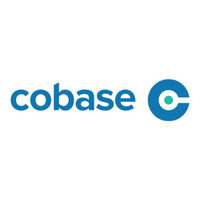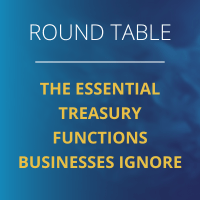But how does one ensure that this pivotal function remains seamless, effective, and in tune with the times? Sara Þorsteinsdottir, Treasury Manager at Invesco EMEA – Private Markets shares insights from her vast experience, emphasizing the significant influence of technology and the value of strong, transparent relationships.
She recalls, “I have seen very large companies have manual only processes and no technology.” In such scenarios, the consequences can be manifold. Delayed transactions, increased human errors, and the overwhelming burden on personnel are just the tip of the iceberg.
Rationalization
Every company, irrespective of its size or the industry it operates in, undergoes a life cycle of growth, stability, and sometimes, transformation. As these companies expand their operations, diversify their services, or enter new markets, there’s a parallel trajectory observed in their banking relationships. Over time, the number of banks and accounts a company works with can proliferate, reflecting the firm’s evolving needs and strategic moves. However, without an intentional approach to managing these relationships, companies can soon find themselves in a complex web of accounts that is neither efficient nor cost-effective. This is where the concept of rationalization steps in, offering a strategic way forward.
When you work in the financial world, especially in the domain of treasury management, you’ll often encounter the term ‘rationalization’. It’s a word that evokes images of streamlining, consolidation, and making processes more efficient. It can be one of the answers to
Taking charge of a rationalization project is no small feat. Sara was responsible for a significant transition at BMI, a shift from multiple banks to a single major institution. Such projects demand meticulous planning, sharp decision-making, and a deep understanding of various financial processes.
Sara has some key take-aways:
- User Setup & Account Closures: One of the primary tasks in a rationalization project involves setting up users and closing redundant accounts. It’s crucial to ensure that all stakeholders have the appropriate access and that there are no lingering financial loose ends.
- Understand the number of accounts entities require and the best processes for their management.
- Negotiating Bank Fees: One of the less obvious aspects of bank rationalization is the opportunity it presents in terms of negotiating bank fees. By consolidating processes and accounts, a company stands in a stronger position to negotiate more favorable terms with its banking partners.
- Building Relationships: Sara emphasized the importance of maintaining a healthy relationship with your bank. Trust, transparency, and mutual respect can ease the rationalization process and pave the way for more favorable conditions in the future.
Rationalization, when done right, can lead to streamlined operations, cost savings, and enhanced efficiency. But, as with all major transitions, it requires dedication, teamwork, and a clear vision to see it through to success.
The Promise of a Robust TMS or Banking System
A Treasury Management System (TMS) or an efficient banking system isn’t just an added bonus – it’s a necessity. Sara highlights its transformative potential, “A good TMS or banking system can transform the day-to-day not only of treasury but the whole cash management side.”
With the right technological backing, companies can streamline their processes, minimize errors, and achieve unprecedented efficiency levels. But the ripple effect of a robust TMS doesn’t end with the treasury. It extends to the broader financial functions of an organization, ensuring that cash flow, payments, and other critical financial operations are managed with precision and speed.
Beyond Technology: The Role of Relationships
While technology is a game-changer, treasury management is not solely about bits and bytes. Sara firmly believes that the essence of successful treasury management lies in cultivating and nurturing relationships.
“The key relationships outside of the internal stakeholders are your banks,” she notes, underlining the importance of partnering with financial institutions that truly understand and cater to a company’s needs.
This partnership goes beyond just transactions. It’s about transparent communication, mutual understanding, and a shared vision for financial growth and stability.
The Internal Dynamic: Teamwork and Senior Management
For any strategy to materialize, internal dynamics play a significant role. “Support, transparent communication within your team goes hand in hand to secure achievement,” Sara points out. The synergy within the treasury team, underpinned by open communication, is the backbone of a thriving department.
However, the role of senior management cannot be overlooked. Their buy-in, support, and understanding are crucial for any treasury vision to be put into practice. Engaging with and gaining the trust of senior management is a two-way street, and it’s indispensable for the holistic success of the treasury function.
In Conclusion
In the ever-evolving world of finance, the lessons from seasoned professionals like Sara Þorsteinsdottir provide invaluable guidance. The blend of advanced technology and human relationships forms the bedrock of successful treasury management. As businesses strive to stay ahead of the curve, it’s this balanced approach that will pave the way for sustained growth and efficiency.
Read more:
Cash is Queen is here! This e-book stands as a testament to the remarkable achievements of women who have boldly navigated the treasury sector, making invaluable contributions along the way.
Read the stories of the pillars of this e-book:
Kate Pohl, Aimee Cullen, Lee-Ann Perkins and Sara Þorsteinsdottir.
Within these pages, you will read about a blend of professional milestones and personal philosophies. How they melded technology with finance, their forward-thinking approach to global market trends, and their innovative strategies that have steered their respective organizations to success. Get you copy now!












